Silicon Nitride Substrate, Silicon Nitride Ceramic Substrate Formula
What Is Silicon Nitride Ceramic Substrate?
Silicon Nitride Ceramic Substrate is a high-performance ceramic substrate made from silicon nitride (Si₃N₄) as the core material. Its primary components are the elements silicon (Si) and nitrogen (N), chemically bonded to form Si₃N₄. During manufacturing, small amounts of sintering aids—such as alumina (Al₂O₃) or yttria (Y₂O₃)—are typically added to help the material form a dense and uniform microstructure at high temperatures.
The substrate's internal crystal structure is predominantly in the β-phase, where interlocked grains create a honeycomb-like stable network. This unique arrangement gives the material high mechanical strength and outstanding resistance to thermal shock. The dense structure is achieved through high-temperature sintering, resulting in excellent thermal conductivity, strength, heat resistance, and corrosion resistance. It is widely used in electronic devices, power equipment, and aerospace, often serving as a heat-dissipating platform or an insulating support component for electronic elements.
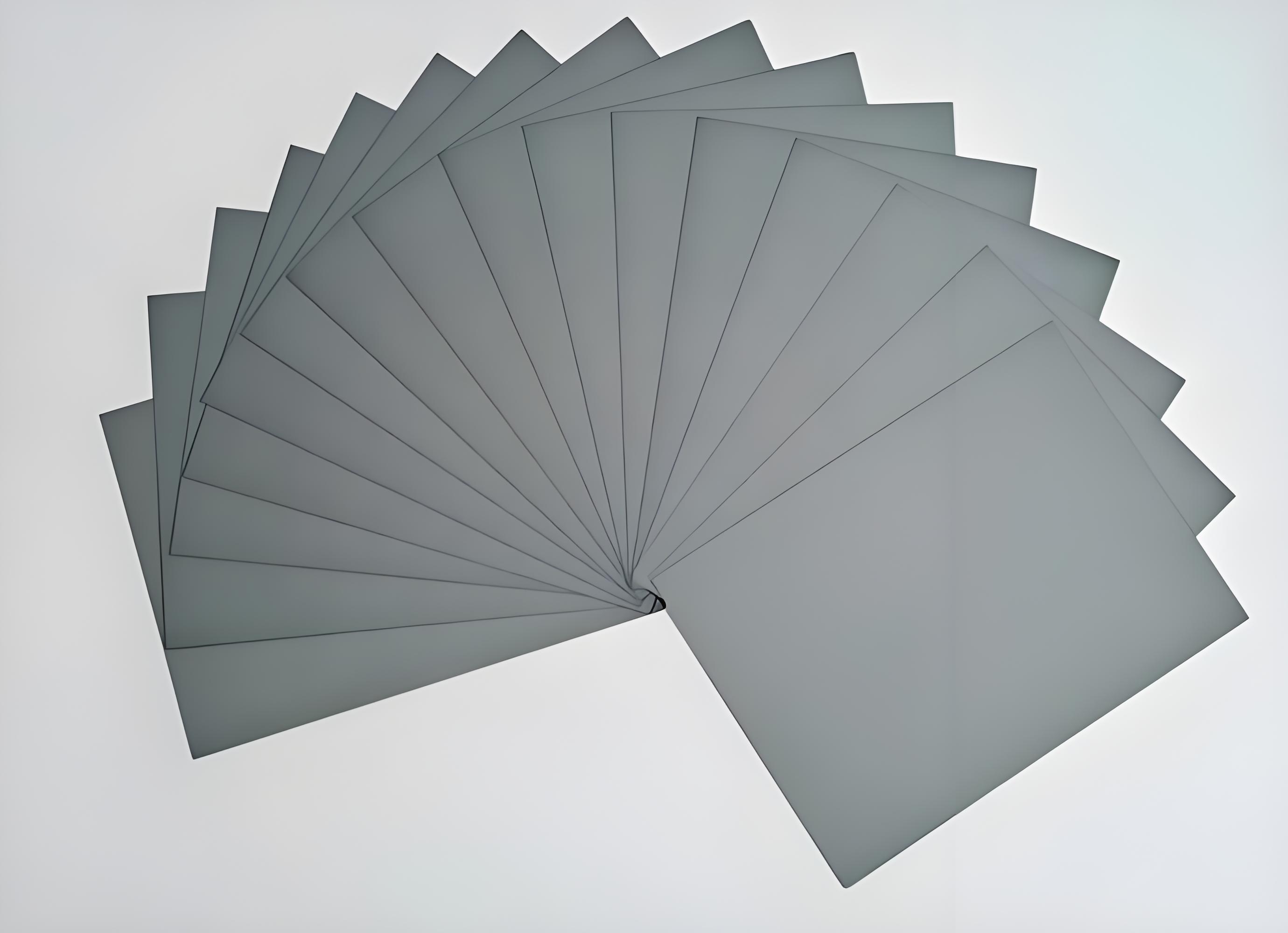
Characteristics of Silicon Nitride Substrate
1. Thermal Conductivity
With a thermal conductivity of about 80–90 W/(m·K), it performs better than alumina ceramics in dissipating heat. For instance, in electric vehicle power modules, silicon nitride substrates can lower the chip temperature by over 30%, enhancing efficiency and reliability.
2. Mechanical Strength
The three-point bending strength can exceed 800 MPa, which is about three times that of alumina ceramics. Tests from certain companies show that a 0.32 mm thick substrate can withstand 400 N of pressure without breaking.
3. Thermal Stability
Operating stably between -50°C and 800°C, it has a low thermal expansion coefficient of 3.2 × 10⁻⁶/°C, which matches well with semiconductor materials. In one model of a high-speed rail traction inverter, the failure rate due to rapid temperature changes dropped by 67% after switching to silicon nitride substrates.
4. Insulation Performance
At room temperature, it has a volume resistivity greater than 10¹⁴ Ω·cm and a dielectric breakdown strength of 20 kV/mm, fully meeting the insulation demands of high-voltage IGBT modules.
Silicon Nitride Formula
The chemical formula for silicon nitride is Si₃N₄. This compound consists of three silicon atoms and four nitrogen atoms tightly bound in a robust covalent network. The formula may appear simple, but the structure it forms is anything but basic.
Silicon Nitride Crystal Structure
Silicon nitride, as an emerging semiconductor material, demonstrates exceptional performance under extreme conditions such as high temperatures and high pressure due to its outstanding thermal stability and chemical inertness. It primarily exists in two crystal structures: the octahedral structure and the hexagonal crystal structure (also called alpha (α) and beta (β)).
The octahedral structure, also known as β-Si₃N₄, features eight equivalent Si-N chemical bonds. In this arrangement, nitrogen atoms occupy the vertices of the octahedron, while silicon atoms are positioned at the center and on six face-centered sites. The unit cell dimension is uniformly 1.491 nm.
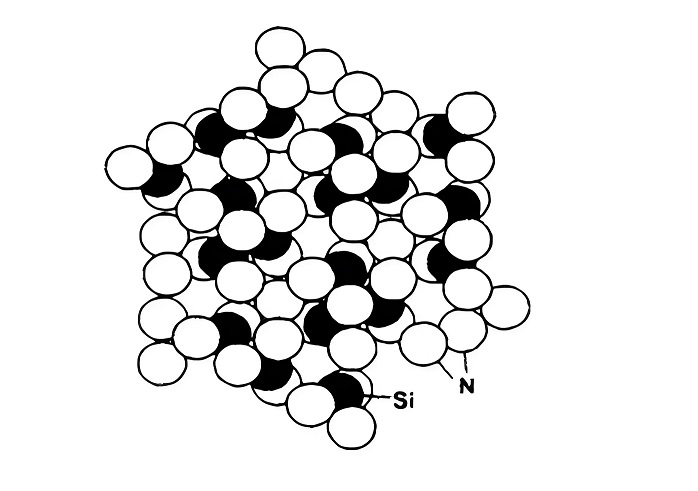
In contrast, the hexagonal crystal structure, referred to as α-Si₃N₄, has a unique atomic arrangement. Silicon atoms occupy six equivalent positions within a hexagonal close-packed lattice, paired with nitrogen atoms in a distinct configuration. Its lattice parameters are a = b = 0.3855 nm and c = 1.07 nm.
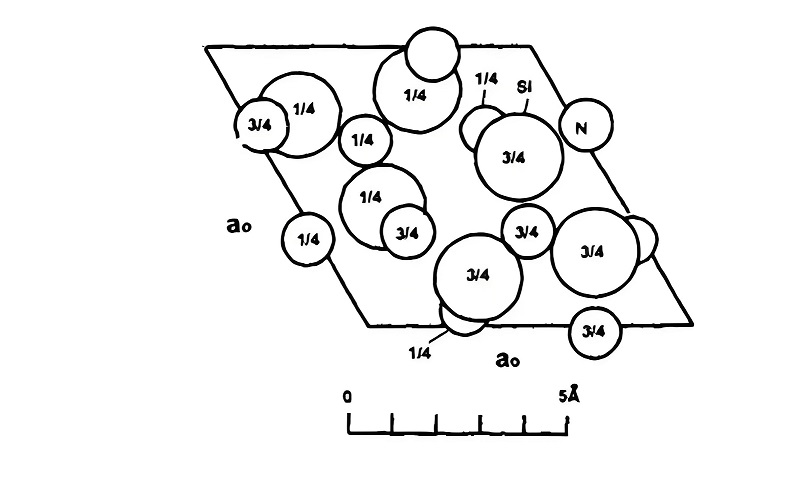
Silicon Nitride Material Properties
The material properties of silicon nitride explain its widespread use:
|
Property |
Value |
|
Density |
~3.2 g/cm³ |
|
Thermal Conductivity |
15–90 W/m·K |
|
Melting Point |
Approx. 1900°C (technically decomposes) |
|
Flexural Strength |
600–1000 MPa |
|
Hardness (Vickers) |
1400–1600 HV |
|
Dielectric Strength |
>10 kV/mm |
|
Coefficient of Thermal Expansion (CTE) |
~3.2 x 10⁻⁶/K |
|
Friction Coefficient |
0.02-0.08 |
|
Wear Rate |
10⁻⁷ mm³/(N·m) |
|
Resistivity Volume |
10¹⁴-10¹⁶ Ω·cm |
|
Dielectric Constant (DK) |
8-9 |
Notably, while silicon nitride does not “melt” in the usual sense, it decomposes at elevated temperatures, usually around 1900°C. This decomposition behavior, rather than a true melting point, is common in covalently bonded ceramics.
Manufacturing Method of Silicon Nitride Ceramic Substrate
There are two primary production methods for silicon nitride ceramic substrates: reaction sintering and hot-press sintering.
In the reaction sintering method, a mixture of silicon powder or silicon powder combined with silicon nitride powder is shaped using conventional ceramic forming techniques. The shaped material is then pre-nitrided in a nitrogen furnace at 1150–1200°C to achieve a certain level of strength. Once pre-nitrided, the material can undergo machining on standard equipment. It is then subjected to a further nitriding process at 1350–1450°C for 18 to 36 hours until it is completely transformed into silicon nitride. Products manufactured using this method exhibit precise dimensions and excellent volume stability.
The hot-press sintering method involves combining silicon nitride powder with small amounts of additives such as MgO, Al₂O₃, MgF₂, AlF₃, or Fe₂O₃. This mixture is then subjected to high pressure (above 19.6 MPa) and a temperature range of 1600–1700°C, where it is both compressed and sintered simultaneously. Products created through hot-press sintering typically have higher density and better performance compared to those produced via reaction sintering. Below is a table shows the comparison between performance of using two methods:
|
Performance |
Reaction sintering Si3N4 |
Hot press Si3N4 |
|
Thermal shock resistance |
Good |
Excellent |
|
Thermal stress resistance |
Good |
Excellent |
|
Dimensional processing accuracy |
Excellent |
Poor |
|
Wear resistance |
Excellent |
Excellent |
|
Corrosion resistance |
Excellent |
Excellent |
Why Is Silicon Nitride Used as a Ceramic Substrate?
Silicon nitride is trusted as a ceramic substrate because it addresses a growing need for thermal control and structural reliability in compact, high-power electronics. As device density increases, traditional substrates struggle to keep up with thermal stress and mechanical load.
Silicon nitride substrates maintain mechanical stability even under fast thermal cycling. That makes them ideal for IGBTs, power modules, and automotive inverter circuits, where power dissipation is high and failure is not an option.
It’s also preferred in RF applications, where the substrate must support fine-line circuitry and maintain a stable dielectric constant. This balance of electrical and thermal performance is difficult to find in conventional materials.
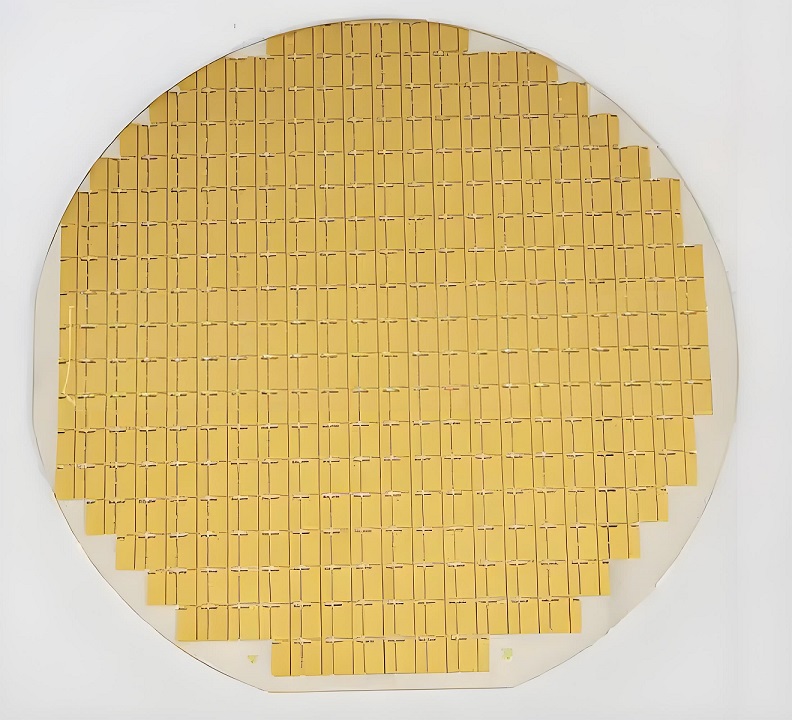
What Is the Alternative to Silicon Nitride?
While silicon nitride offers a very good combination of thermal, mechanical, and insulating properties, it’s not the only ceramic material engineered for demanding applications. Several alternatives can serve in similar roles depending on the specific requirements of the application.
1. One common substitute is aluminum nitride (AlN). Like Si3N4, it features in grey color. It stands out for its superior thermal conductivity, often exceeding 170 W/(m·K), which makes it popular for high-power electronic packaging. However, it's more fragile and less tolerant to mechanical stress compared to silicon nitride.
2. Another alternative is alumina (Al₂O₃). It's widely used due to its cost-efficiency and excellent electrical insulation, but it lacks the toughness and thermal shock resistance that silicon nitride provides. In applications where budget constraints are tight, alumina ceramic substrate often takes the lead despite its lower strength.
3.Silicon carbide (SiC) is also a notable substitute. It excels in abrasion resistance and high-temperature performance, making it a top choice for harsh, erosive environments. However, it can be more expensive and less electrically insulating than silicon nitride.
Silicon Nitride vs Silicon Carbide Ceramic PCB
The silicon nitride vs silicon carbide debate is ongoing in material science. While both are advanced ceramics, they differ significantly in performance and applications.
|
Property |
Silicon Nitride (Si₃N₄) |
Silicon Carbide (SiC) |
|
Crystal Structure |
Primarily hexagonal (α & β phases) |
3C-SiC, 4H-SiC, 6H-SiC |
|
Chemical Formula |
Si₃N₄ |
SiC |
|
Thermal Conductivity |
80–90 W/(m·K) |
Up to 200 W/(m·K) |
|
Mechanical Strength |
Very high (up to 1,000 MPa flexural) |
High (600–800 MPa) |
|
Fracture Toughness |
Excellent (6–10 MPa·m¹/²) |
Moderate (3–5 MPa·m¹/²) |
|
Density |
~3.2 g/cm³ |
~3.1 g/cm³ |
|
Thermal Expansion Coefficient |
~3.2 × 10⁻⁶/°C |
~4.0 × 10⁻⁶/°C |
|
Hardness |
Vickers ~15 GPa |
Vickers ~22–28 GPa |
|
Electrical Insulation |
Excellent |
Semi-conductive |
|
Oxidation Resistance |
Stable up to 1,200°C |
Stable but can oxidize above 800°C |
|
Wear Resistance |
Very good |
Excellent |
|
Corrosion Resistance |
Outstanding |
High, but can degrade in alkalis |
|
Shock Resistance |
High thermal shock resistance |
Poorer thermal shock resistance |
|
Machinability |
Difficult but better than SiC |
Very difficult |
|
Cost |
Moderate to high |
High |
|
Common Uses |
Substrates, bearings, aerospace, automotive, power modules |
Heat exchangers, mechanical seals, armor, semiconductors |
Key Points:
- SiC leads in thermal conductivity, but Si₃N₄ manages heat with better shock resistance.
- Si₃N₄ is more fracture-resistant and robust under impact.
- Electrical Role: Si₃N₄ insulates well; SiC is semi-conductive and used in power electronics.
- Si₃N₄ is slightly easier to machine, making it better for precision applications.
- SiC suits harsh, high-friction settings; Si₃N₄ is preferred for environments needing a blend of strength, insulation, and resilience.
What Is Silicon Nitride Ceramic Substrate Used For?
- Power electronics: IGBT modules, MOSFET baseplates, and rectifier bridges.
- Automotive systems: EV inverters, engine sensors, and braking modules.
- Aerospace: Radar systems, control electronics, and structural brackets.
- Semiconductors: Heat sinks and circuit carriers for high-frequency components.
- Renewables: Wind turbine power modules and photovoltaic inverters.
FAQs
Q1: Is silicon nitride safe to use in electronics?
Yes, it's chemically stable, electrically insulating, and mechanically robust. It doesn’t release harmful substances during operation.
Q2: What is the melting point of silicon nitride?
Silicon nitride doesn’t melt in the traditional sense. It decomposes at around 1900°C under atmospheric pressure.
Q3: How does silicon nitride improve power modules?
It offers high thermal conductivity and mechanical strength, reducing thermal fatigue and increasing reliability.
Q4: Can silicon nitride be used in RF circuits?
Yes. Its stable dielectric properties and thermal performance make it suitable for high-frequency, high-power RF applications.
Q5: Why choose silicon nitride over aluminum nitride?
While AlN has higher thermal conductivity, silicon nitride offers better mechanical strength, thermal shock resistance, and long-term reliability.








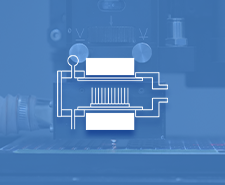





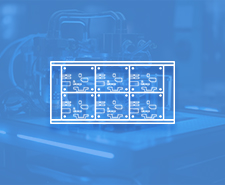







































 HOME
HOME







